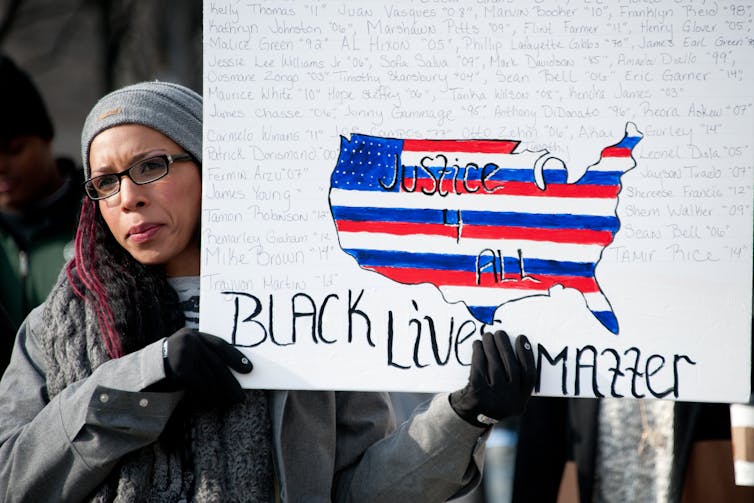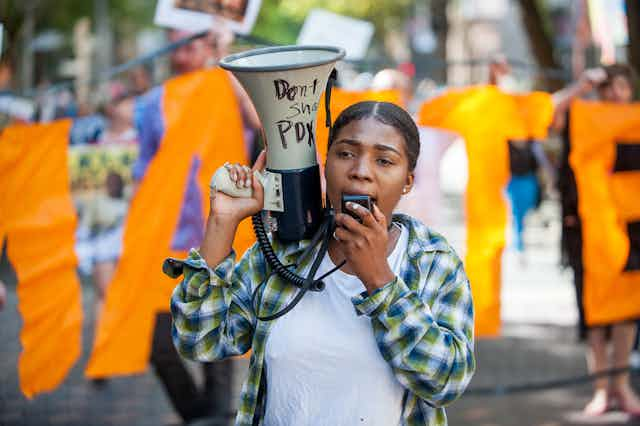Full equality might remain a distant goal, but the gender equality movement has made considerable progress internationally. The same cannot be said of racial equality. Campaigns tend to remain regional or national, rather than international, due to the complexity of ethnicity and the nuanced nature of racial categories.
But there is potential for those fighting against racism to learn from the gender equality movement. Despite the fact that both have historically different struggles for recognition and emancipation, the success of the women’s movement shows there is scope for developing transnational solidarity when it comes to equality. It is this switch to becoming an international movement that is crucial for success.
Progress in gender campaigns involved international treaties and agreements. The most remarkable one is the Convention on the Elimination of all kinds of Discrimination Against Women, which was adopted in 1979 by the United Nations General Assembly and has been signed by 191 countries. Along with other gender equality laws and regulations, it has led to considerable progress toward gender equality across the world. International agreements are important for the spread of ideas of equality and diversity. They turn into national regulation and this kind of legal pressure has a bigger impact on people and organisations acting more equally than when it’s voluntary.
But the International Convention on the Elimination of All forms of Racial Discrimination, which was adopted in 1969 and undersigned by 183 countries, has been less effective than its gender equivalent. In spite of this common UN mandate, the movement for racial equality has remained too local, with individual campaigns failing to get international consensus.
Only in rare cases does the struggle against racism go global – such as the international embargoes against apartheid in South Africa from the late 1970s and into the 1980s, which was very effective.
Going global
As well as international agreements, the drive toward gender equality has benefited from global gatherings like the UN’s periodic World Conferences on Women. These would bring together government officials, NGO representatives, activists and journalists and create a real buzz around the issue of gender equality.

The Beijing conference in 1995 was a turning point for the women’s movement. It had 17,000 delegates from around the world and created a concrete action plan to further women’s rights. Similar international gatherings have not happened for the elimination of racism.
Another factor in the gender movement’s success has been its ability to create internationally agreed goals and definitions of gender equality – such as equal pay and tackling the gender gap. This makes it much easier to raise international awareness, and when a march for women’s equality takes place, it’s easy to understand and support around the world.
The same has not happened in the field of racial equality. In fact, the measures for racial equality are locally debated and widely contested. For example, the Black Lives Matter movement is very much US-centred. Meanwhile, the “Racism, it stops with me” campaign in Australia is disconnected from Black Lives Matter in public consciousness. Yet they are both fighting institutional racism.
Using data
Global organisations are important conduits for the transfer of ideas of equality, diversity and inclusion. They have been instrumental in the adoption of gender equality rhetoric internationally. This potential remains untapped in the field of racial diversity and equality.
Recent research on equality and diversity in global organisations shows that most focus their efforts on gender equality. Because racial categories are discussed in a very local way and data is rarely collected, there is small scope for international debate or comparison.

When it comes to gender equality there is clear data on things like the number of women on boards and the gender pay gap. Developing new measures of ethnic inclusion (and exclusion) is one way to better judge the efforts of international organisations and foster solidarity beyond national borders.
Joining forces
The fight for women’s rights has long struggled with the issue of intersectionality – taking into account how some women suffer from other forms of discrimination, as well as their gender. This can include race but also class, sexual orientation, and disability. But, by and large, the white and wealthy feminist movement has been successful in securing intersectional allies around the world and transcending various hostilities to focus on common interests.
The same is not true in the fight for racial equality, which has suffered from intersectional hostility, with different groups feeling like they are placed in a pecking order, often without a sense of solidarity. In the US, for example, different racial groups are increasingly divided instead of fighting together for equality. To build solidarity between different races and across borders, the race equality movement must develop a common purpose that can appeal to a wider public.
It must also make racial equality everyone’s responsibility rather than a problem of the few. The gender equality movement has also been successful in developing the case for gender equality as a social, economic and political necessity – the idea that if women suffer, society is poorer as a result. Campaigners for racial equality could develop these arguments too.
All progressive social movements need solidarity that can transcend their single category agendas. Intersectional solidarity is the way forward for both gender and racial equality movements to gain strength. This will require both movements to overcome their internal fighting and fears of diluting their individual message – and find a way forward for equality for all.

